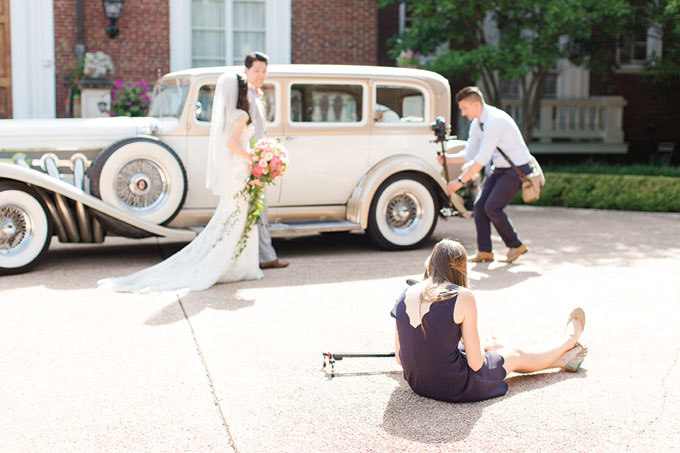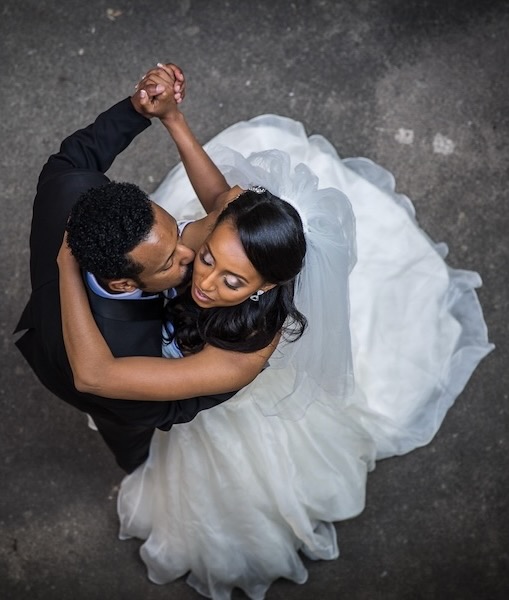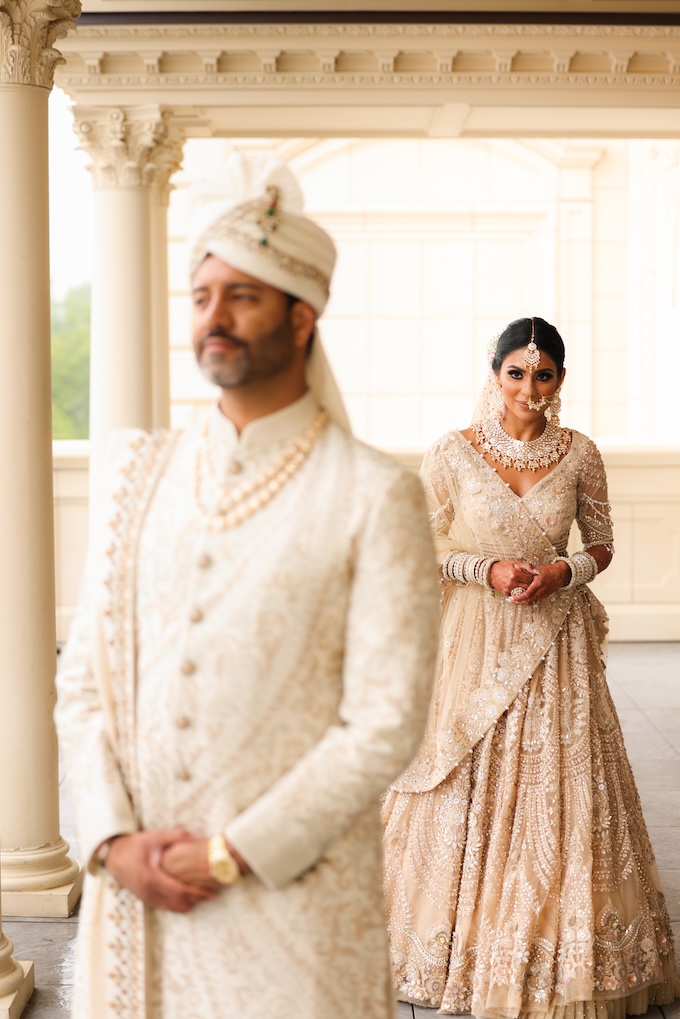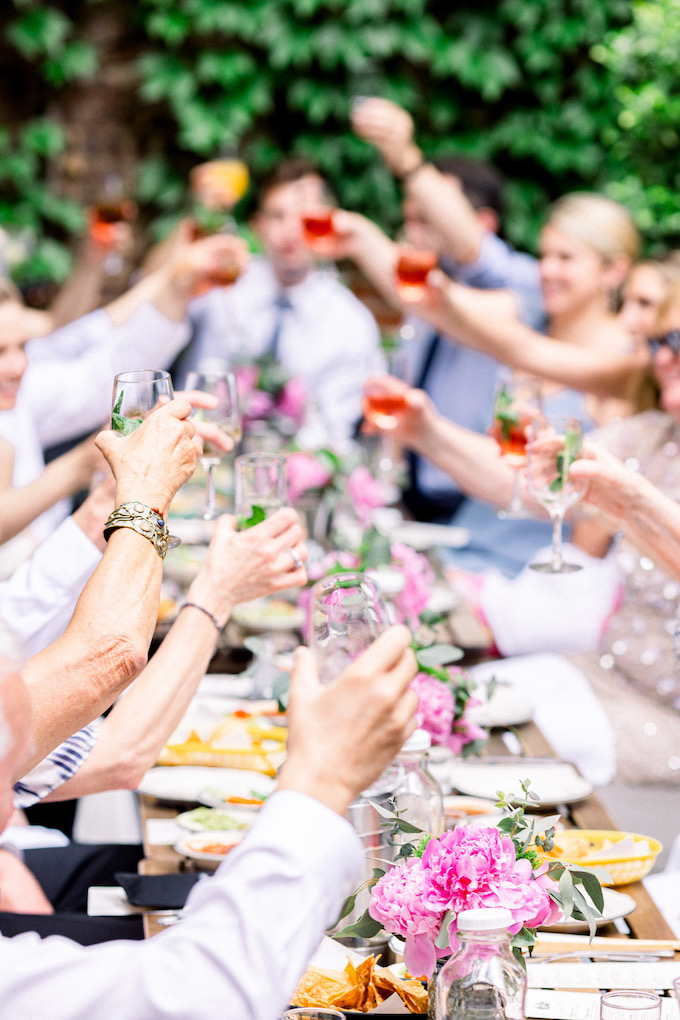Weddings
The key to any great photographer/videographer relationship comes down to one thing: communication. Our goal is to constantly be in communication with the photographer throughout the entire wedding day. As you know, weddings are fast-paced and decisions are being made on a minute-by-minute basis. Even though we have worked with Katelyn James many times, we still make it a priority to have a quick chat before every major event throughout the day. This helps ensure we’re always on the same page and getting exactly what we each need.
As former wedding photographers, we have a bit of an advantage over most videographers. We know the struggles and pitfalls that make a photographer’s job super difficult, and we do our best to help alleviate those issues for the photographer when we’re together on a wedding day.
What we’ve found over the years, though, is that most photographers are unaware of some of the unique needs of videographers. We believe that if wedding photographers were aware of a few of these technical challenges videographers face, they would be able to work together more smoothly. Here are some important points to keep in mind.
SHOOTING VIDEO = SHOOTING JPEG
A VIDEOGRAPHER’S REALITY
As filmmakers, we do not have the ability to shoot “RAW” video in the same way that photographers do on a wedding day. The video files (JPEGs) that our cameras generate are extremely compressed in order to make them manageable sizes. The way the image looks straight out of the camera is more or less what we have to work with in post-production. Slight adjustments can be made to the overall look and feel of the image, but getting correct exposure and white balance in camera is crucial for videographers.
How it affects photographers
When entering any new lighting scenario throughout the day, make sure to give the videographer a few extra seconds to really dial everything in before the action happens. Double-check that they are ready to go before starting the action, like cueing a bride to begin walking toward her groom for the first look.
FILMMAKERS CAN ONLY SHOOT HORIZONTALLY
A VIDEOGRAPHER’S REALITY
Imagine shooting an entire wedding day with nothing but horizontal images. How would that impact the way that you pose and shoot throughout the day? A full body framed horizontally requires you to be much farther away from your subject compared to when you’re shooting vertically. Well, this is the only way that videographers can shoot throughout the day.
How it affects photographers
When choosing a spot to hang the dress, do a first look, shoot details or any other part of the day alongside the videographer, keep in mind that it should look good both vertically and horizontally. If there is an extremely distracting element (i.e. a trash can) that can only be cropped out in your vertical shots, that might not be ideal for the videographer. Of course, sometimes these situations can’t be avoided. But if you approach a situation and see it looks awful horizontally, ask the videographer how you can make it work better for them.
MANUAL FOCUS IS SLOWER THAN AUTOFOCUS
A VIDEOGRAPHER’S REALITY
Most wedding filmmakers you will work with—especially the ones shooting with DSLRs—are using manual focus for every shot throughout the day. Autofocus for video just isn’t reliable enough to be used for the majority of situations and scenarios. Most DSLR cameras allow you to digitally punch in on the image prior to recording to make sure the focus is spot on. However, once the camera is recording, there is no way to punch in and double-check focus. Just like in photography, if a shot is out of focus, there is absolutely no way of fixing that in post.
How it affects photographers
Again, giving the filmmaker a few extra seconds to dial in their focus will go a long way. As filmmakers, we have a lot to dial in just perfectly before hitting record, focus being one of them. While our goal is to do this as quickly as possible, sometimes we just need a few extra seconds to make sure everything is good to go. This is especially true for moments like the first look or anything that only happens once. Double-checking to make sure we are dialed in before starting the action is one of the most helpful things you can do.
AUDIO IS CRUCIAL FOR VIDEOGRAPHERS
A VIDEOGRAPHER’S REALITY
Audio drives our wedding films. It is the backbone that we use to compose the story for the entire film. Without good audio, it’s tough to tell a great story. We incorporate audio into our films from major moments such as speeches, notes and vows, as well as using natural sounds occuring throughout the day.
How it affects photographers
Simply being aware that videographers are capturing both audio and video throughout the day is helpful. By no means do you need to be silent, but if there is any kind of potential meaningful dialogue, remember that the filmmaker might want to use it in the film. If your camera has a silent shutter mode, turn it on. If not, keeping your shutter clicks to a minimum during crucial audio moments is appreciated. Of course, if the bride is crying reading her note, you need to get a photo of it!
CAPTURING “THE MOMENT” VS. “CAPTURING THE MOMENT”
A VIDEOGRAPHER’S REALITY
We are trying to tell the whole story leading up to a moment, then capture that moment while making it all look seamless. When the bride is coming down the aisle, for example, the photographer is looking for a handful of great emotional photos while we are trying to capture the entire sequence together—the doors opening, guests standing up, the bride coming down the aisle, the groom’s reaction and so on. But instead of needing just one second of each of these, we need many seconds of uninterrupted footage to work together in the edit. Those moments just before “the moment” are just as important to videographers as the moment itself.
How it affects photographers
Be aware of those extra moments and shots that the videographer is trying to capture that you might not need. They often rely on stationary cameras on tripods to cover additional angles or fill in gaps in coverage. Communicating with them about where their cameras will be, what focal length they are shooting and which scenes they need to capture can help you navigate these moments. You might feel like you can’t move anywhere without being in the way, but if you know why they have those cameras, you can better understand their purpose and how you can get your shots without blocking theirs.
Related: How a Photographer Can Foster a Fruitful Relationship with a Wedding Videographer
Film Frenzy: New Video Cameras
Listen Up: Great Audio Gear for Wedding Filmmakers






